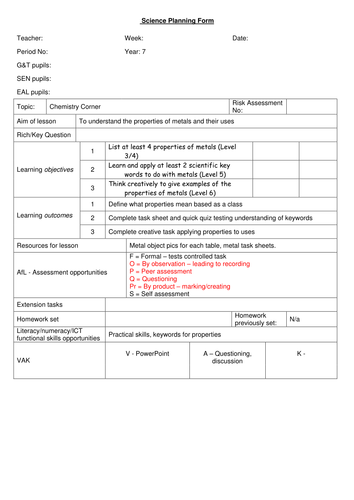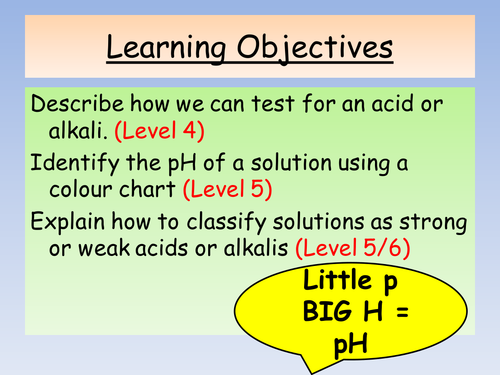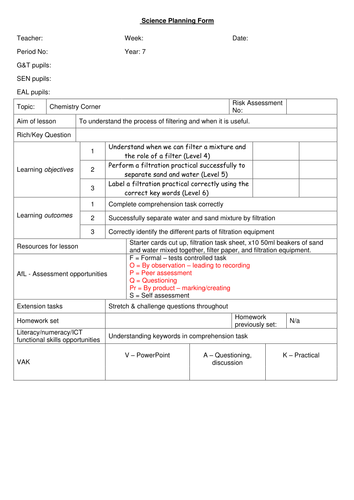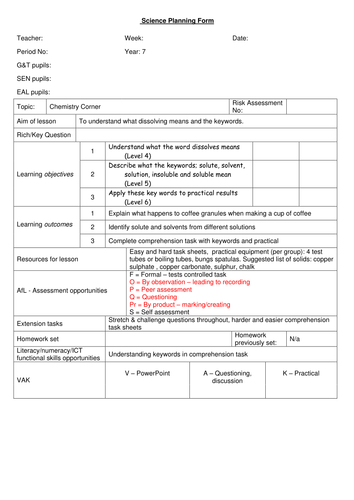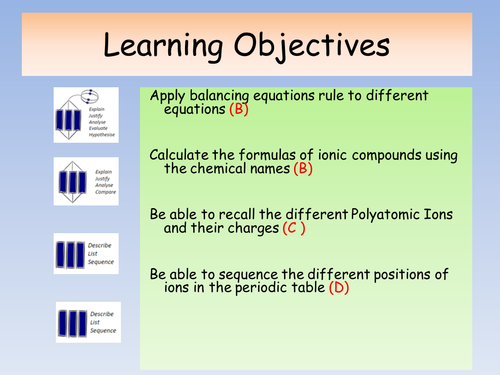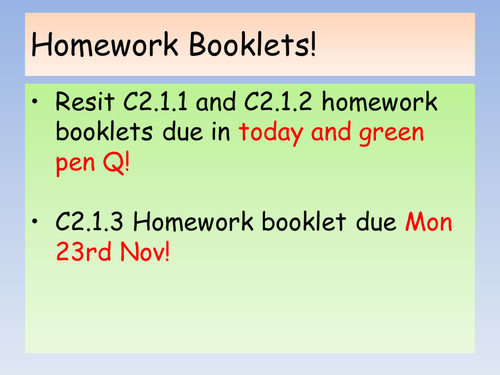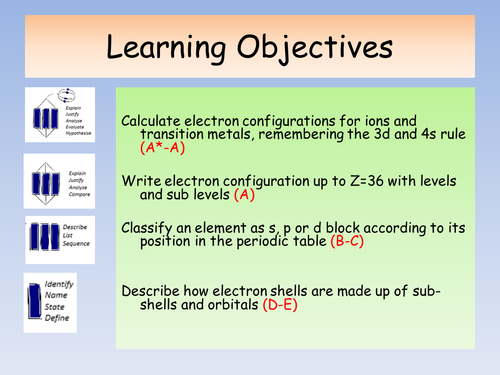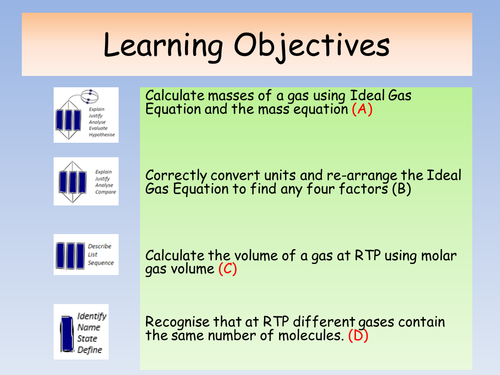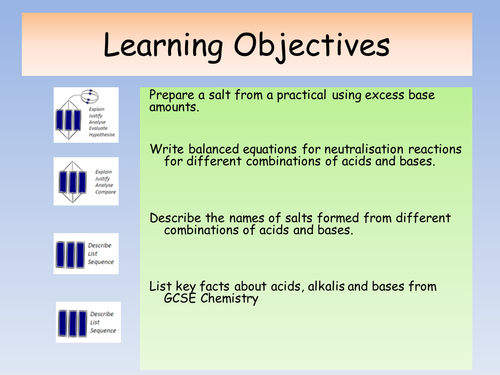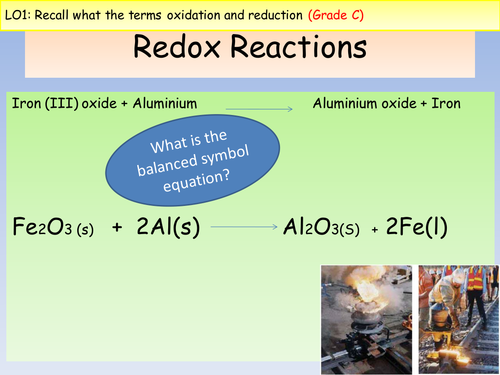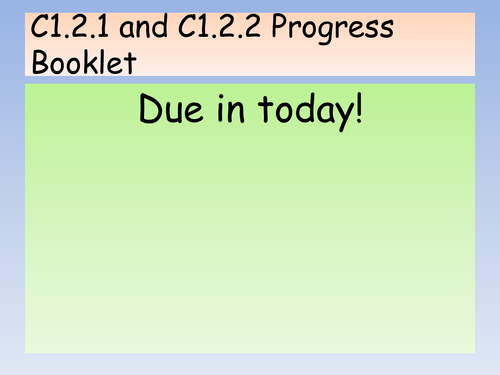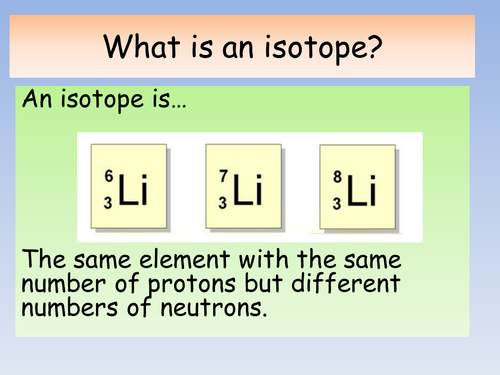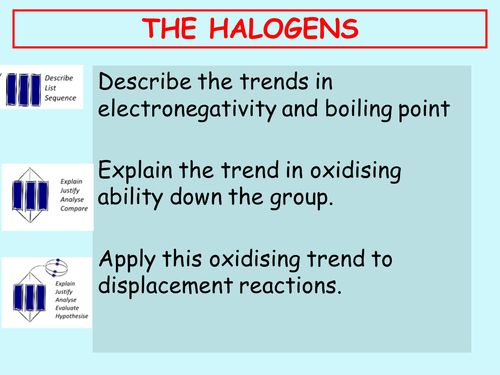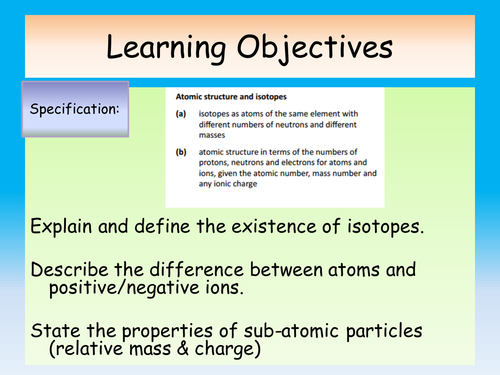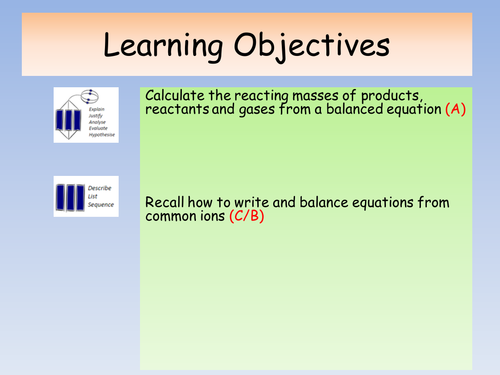
50Uploads
22k+Views
8k+Downloads
All resources

Chemistry Corner KS3 Year 7 Topic - Properties of Metals Lesson
This is the third lesson in a topic I made called Chemistry Corner for KS3 Year 7.
This lesson includes a powerpoint on what the word properties mean, explaining key properties of metals, creative thinking task on properties which involves a whole class activity. The students rate their learning at the end of the lesson as well.
This scheme of work was made when KS3 Levels were used, so you may need to amend the levels according to your own assessment criteria used for KS3.

Chemistry Corner KS3 Year 7 Topic - Acids and Alkalis
This is the sixth lesson in a topic I made called Chemistry Corner for KS3 Year 7.
This lesson includes a powerpoint on what an acid and alkali are, pH scale, testing a circus of liquids
and recording results, extension questions and a homework sheet on acids and alkalis.
This scheme of work was made when KS3 Levels were used, so you may need to amend the levels according to your own assessment criteria used for KS3.

Chemistry Corner KS3 Year 7 Topic - Making indicator
This is the seventh lesson in a topic I made called Chemistry Corner for KS3 Year 7.
This lesson includes a powerpoint on a high five review task for acids and alkalis, making indicator from red cabbage, testing red cabbage indicator to identify whether a mystery solution is an acid or alkali.
This scheme of work was made when KS3 Levels were used, so you may need to amend the levels according to your own assessment criteria used for KS3.

Chemistry Corner KS3 Year 7 Topic - Filtering
This is the tenth lesson in a topic I made called Chemistry Corner for KS3 Year 7.
This lesson includes a powerpoint reviewing solvent, solute and solution from the previous lesson, introducing the key words filtrate and residue, mini plenary assessment worksheet and a desert island practical problem using filter paper and labelling a filtration practical.
This scheme of work was made when KS3 Levels were used, so you may need to amend the levels according to your own assessment criteria used for KS3.

New OCR A Level Chemistry Specification Lesson - Properties of Alcohols
This powerpoint covers properties of alcohols which would take one lesson's worth of content. The powerpoint covers:
Boiling point, Solubility and Volatility linked to hydrogen bonding of alcohols
Graph drawing task to illustrate BP of alcohols vs alkanes
Classifying alcohols into primary, secondary and tertiary alcohols
Snap plenary task for alcohols.

Chemistry Corner KS3 Year 7 Topic - Dissolving
This is the ninth lesson in a topic I made called Chemistry Corner for KS3 Year 7.
This lesson includes a powerpoint on what dissolving means and explanations about key words solvent, solute and solution, a dissolving practical, comprehension tasks reviewing the lesson and key words (differentiated options for the task)
This scheme of work was made when KS3 Levels were used, so you may need to amend the levels according to your own assessment criteria used for KS3.

OCR A Level Chemistry A New Spec (from Sept 2015) - Formulae and equations lesson
This is the third lesson I teach in the Atomic Structure and Isotopes lesson as part of Module 2 - Foundations in Chemistry.
The lesson powerpoint covers ionic charges, binary compounds, polyatomic ions, formulas of ions and balancing equations. There is also a longer and harder balancing equations worksheet and mark scheme. I have also uploaded the AfL task I set in this lesson for homework for students to research the development of atomic theory as well.

OCR A Level Chemistry A New Spec (from Sept 2015) - Moles, volumes and concentration lesson
This is the fourth lesson in the Amount of Substance topic in Module 2 - Foundations in Chemistry.
After PAG 1.3 has been performed I teach this lesson. The powerpoint covers moles, volume and concentration calculations and re-arranging the equations. converting between units and making up a standard solution using equations.
The worksheets help practice equation and calculation practice and there is a practical sheet for making up a standard solution for students and teachers.

OCR A Level Chemistry A New Spec (from Sept 2015) - Electron structure lesson
This is the first lesson in the Electrons, bonding and structure topic in Module 2 - Foundations in Chemistry.
The powerpoint is long and will probably take 2-3 lessons based on the ability of the class! It covers GCSE concept of electron shells compared to sub-levels, orbitals, rules for filling, short hand configurations and deciding on the blocks in the periodic table.
I have included my tip on how to best illustrate energy levels, sub-levels and orbitals in a diagram drawn on the board if you check the notes at the bottom of the slide!

OCR A Level Chemistry A New Spec (from Sept 2015) - Volumes and Ideal Gas Equation lesson
This is the sixth lesson in the Amount of Substance topic in Module 2 - Foundations in Chemistry.
The powerpoint covers molar gas volume, conversions of units for Ideal Gas Equation, calculating different factors and re-arranging the Ideal Gas Equation and practice questions and answers.
There are also two exam questions that can be used as starters and plenaries as well I've uploaded.

OCR A Level Chemistry A New Spec (from Sept 2015) - Acids, bases and neutralisation lesson
This is the first lesson in the Acids topic in Module 2 - Foundations in Chemistry.
The powerpoint reviews GCSE understanding of acid, alkalis by doing a group activity and then goes onto comparing a base and alkali, comparing weak and strong acids and then creating neutralisation equations using a combination of acids and bases.
The practical sheet is preparing a salt using an acid and base by evaporation and filtration and there are questions on the bottom of the sheet with answers on the teacher sheet.

OCR A Level Chemistry A New Spec (from Sept 2015) - Titration and Concentration lesson
This is the fifth lesson in the Amount of Substance topic in Module 2 - Foundations in Chemistry.
The powerpoint covers calculating concentration review and mass concentrations and then goes onto how to read from a burette and my titration top tips! The students then have to perform a titration and try and get concordant results in order to calculate the concentration of hydrochloric acid using a standard solution of sodium hydrogen carbonate.
There are questions on the practical sheet which structures the calculations with model answers on the teacher sheet.

OCR A Level Chemistry A New Spec (from Sept 2015) - Redox lesson and assessment
This is the redox lesson for Module 2 - Foundations in Chemistry.
I teach this lesson after completing PAG 2.1 with the students to consolidate their learning on Acids and Bases.
The powerpoint covers what redox means, how to calculate oxidation numbers, illustrating what is oxidised and reduced in a reaction and the exceptions.
I have also included the assessment I use called 10 for 10 (10 qs in 10 mins) which is multiple choice and I use to assess the students' learning of topics 2.1.1-2.1.5. There is a checklist on the front for students to colour code and re-read pages in the OCR textbook on the areas they need to improve.

OCR A Level Chemistry A New Spec (from Sept 2015) - Determination of Formulae lesson
This is the second lesson in the Amount of Substance topic in Module 2 - Foundations in Chemistry.
The powerpoint covers empirical and molecular formula, relative molecular mass, hydrated salts and water of crystallisation.
The worksheets will help with empirical formulae calculations (there is a help sheet if needed for weaker students) however there is also a stretch and challenge task on Ions for higher ability students to complete to differentiate.
The practical activity helps bring together empirical formula and water of crystallisation but also helps prepare students for PAG 1.3 prior to them completing their first PAG.

OCR A Level Chemistry A New Spec (from Sept 2015) - Mass Spectrometry lesson
Second Lesson I use as part of the topic Atomic Structure and Isotopes in Module 2 - Foundations in Chemistry.
The lesson reviews Isotopes and ions from the first lesson then goes onto relative isotopic mass and relative atomic mass. It also covers how to identify an element from its mass spectrum and calculating RAM.
OCR new spec does not need to know how a mass spectrometer works but I have some basic information in there to help understanding of what happens.

OCR A Level Chemistry A New Spec (from Sept 2015) - Displacement reactions of Halogens lesson
This is the first lesson in the Halogens topic 3.1.3 in the OCR Specification.
The powerpoint covers the physical properties of the Halogens, trends in boiling points, oxidising ability and displacement reactions.
The lesson also includes a student practical worksheet as well as a teacher/technician worksheet.

OCR A Level Chemistry A New Spec (from Sept 2015) - Ionic and covalent bonding lessons
These are lessons 2 and 3 in the Electrons, bonding and structure topic in Module 2 - Foundations in Chemistry.
The ionic bonding powerpoint covers drawing ionic compounds and writing formulas and the behaviour of ionic compounds.
The covalent bonding powerpoint covers drawing covalent compounds, properties of simple covalent compounds and dative covalent bonding.

OCR A Level Chemistry A New Spec (from Sept 2015) - Electronegativity and IMF lessons
This is lesson 5 and 6 in the Electrons, bonding and structure topic in Module 2 - Foundations in Chemistry.
There is enough content here to easily last 2-4 lessons depending on the ability of the class!
The powerpoint starts off with a bonding pop quiz to test their recall of drawing shapes, names and bond angles then goes onto electronegativity, polar and non polar bonds.
The following lesson then covers London forces, permanent dipole-dipole and hydrogen bonding and applying this to properties of water. There is also an AfL task which I set the students at the end to consolidate their understanding of intermolecular forces and looking at case studies of iodine, water and DNA.

OCR A Level Chemistry A New Spec (from Sept 2015) - Atoms intro lesson
First lesson I use as an introduction to A Level Chemistry as part of Module 2 - Foundations of Chemistry.
It is a great group based lesson to encourage discussion about recapping ideas from GCSE including:
Labelling an atom
Atomic numbers
Numbers of sub-atomic particles in atoms and ions
Isotopes

OCR A Level Chemistry A New Spec (from Sept 2015) - Stoichiometry, yield and atom economy lessons
These are lessons 7 and 8 in the Amount of Substance topic in Module 2- Foundations in Chemistry.
The Stoichiometry powerpoint covers how to use the molar ratio to calculate an unknown and various examples using the equations taught in the topic so far with various degrees of difficulty and answers. I often mount these onto card with the answers underneath around the room to encourage discussion and group work.
The yield and atom economy powerpoint covers how to work out % yield and atom economy calculations as well as comparing the difference and which is more favourable.

